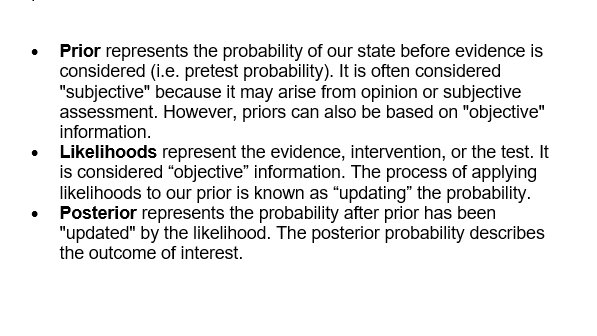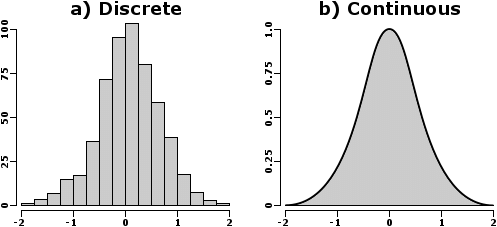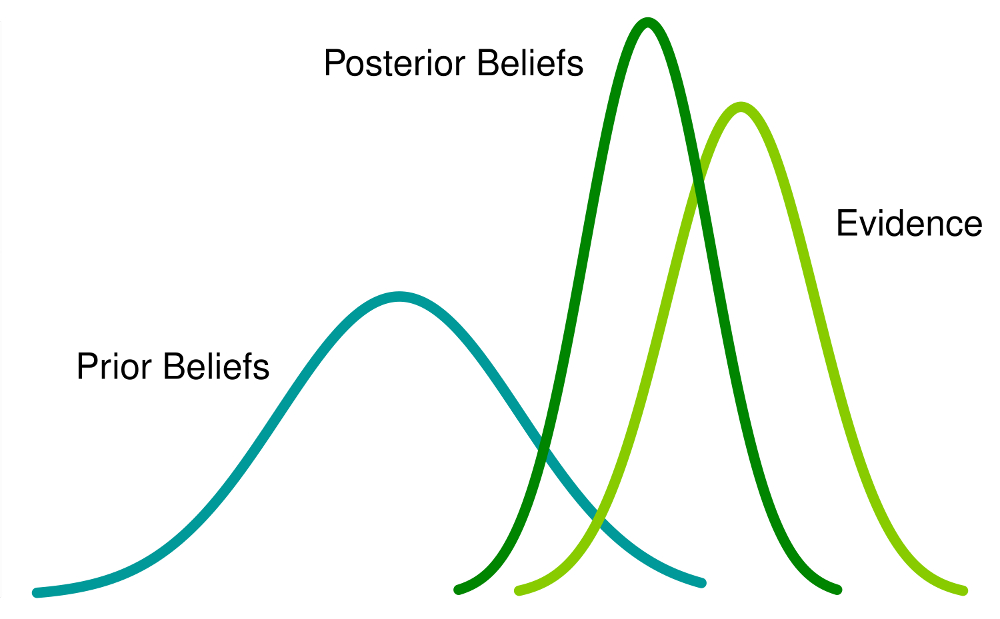1/ Tweetorial on Decision making and Evidence Based Medicine
Or
Integrating Bayesian Inference, Utility, and Uncertainty to optimize rational Medical Decisions.
Or
Integrating Bayesian Inference, Utility, and Uncertainty to optimize rational Medical Decisions.
2/ General disclaimer, this is more of a proposal on how to *add* decision making into our existing EBM framework.
Feedback is welcome, and this is hopefully an evolving field thanks to @RichardLehman1 and others!
Feedback is welcome, and this is hopefully an evolving field thanks to @RichardLehman1 and others!
3/ Approaches to Medical decision making borrows from the broader field of decision theory.
The predominant framework (Statistical/Bayesian) integrates bayesian inference, utility, & uncertainty into a process to optimize rational decisions.
The predominant framework (Statistical/Bayesian) integrates bayesian inference, utility, & uncertainty into a process to optimize rational decisions.
4/ Bayesian Inference
Our approach to clinical diagnosis is Bayesian. Clinical diagnosis involves pre-test values, testing, and post-test values.
All bayesian inference follows this pattern, but we use slightly different (though analogous) terms to describe the process.
Our approach to clinical diagnosis is Bayesian. Clinical diagnosis involves pre-test values, testing, and post-test values.
All bayesian inference follows this pattern, but we use slightly different (though analogous) terms to describe the process.
5/ Framing Questions:
When asking questions about medical decision making, we should start by framing our question in terms of a bayesian inference. What is our prior? What is the evidence? What is our updated posterior (outcome)?
When asking questions about medical decision making, we should start by framing our question in terms of a bayesian inference. What is our prior? What is the evidence? What is our updated posterior (outcome)?
6/ Utility
Rational decision making requires us to consider preferences in addition to outcomes. Preference, in turn, determines the utility of various outcomes. Preferences can be represented by satisfaction for an outcome, risk aversion to an outcome, personal desires, etc.
Rational decision making requires us to consider preferences in addition to outcomes. Preference, in turn, determines the utility of various outcomes. Preferences can be represented by satisfaction for an outcome, risk aversion to an outcome, personal desires, etc.
7/
Utility is often described as a function and is different from the outcome itself. Below are examples where utility, based on preferences, changed the optimal choice for decision making.
Utility is often described as a function and is different from the outcome itself. Below are examples where utility, based on preferences, changed the optimal choice for decision making.
8/ One of the important insights into utility is that rational decisions may not optimize outcomes. If we don& #39;t consider utility, we may be confused at the patient who forgoes life-saving treatment, or the clinician who finds an effective intervention clinically meaningless.
9/ Uncertainty
Medical decision making often involves uncertainty. For simplicity, let’s modify a framework proposed by Paul Han, and separate uncertainty into distributions, complexity, and ambiguity. https://pubmed.ncbi.nlm.nih.gov/23132891/ ">https://pubmed.ncbi.nlm.nih.gov/23132891/...
Medical decision making often involves uncertainty. For simplicity, let’s modify a framework proposed by Paul Han, and separate uncertainty into distributions, complexity, and ambiguity. https://pubmed.ncbi.nlm.nih.gov/23132891/ ">https://pubmed.ncbi.nlm.nih.gov/23132891/...
10/ Uncertainty as a distribution
Values for probabilities & estimates are often presented as a single, discrete number. But if we want to include uncertainty, we should describe them as distributions (i.e. multiple possible values with various frequencies).
Values for probabilities & estimates are often presented as a single, discrete number. But if we want to include uncertainty, we should describe them as distributions (i.e. multiple possible values with various frequencies).
11/ We can easily turn our priors/evidence into probability distributions & likelihood functions (i.e. confidence intervals). Together, this allows the posteriors probability to represent all the various possible and uncertain outcomes.
12/ Uncertainty as complexity
When determining utility, different decision makers (physician, patients, etc), may have different preferences for multiple different outcomes. With each layer, we are adding more complexity and difficulty to our decision making process.
When determining utility, different decision makers (physician, patients, etc), may have different preferences for multiple different outcomes. With each layer, we are adding more complexity and difficulty to our decision making process.
13/ In situations with complexity, it often becomes necessary to model the various considerations. The optimal decision is not always easy and obvious! Even simple models can provides insight into decision making and clarify differences in disagreement.
14/ Uncertainty as ambiguity
Sometimes, we don’t know how to assign preferences, or we have disagreement about the right preferences. Many issues lack consensus! In these situations, uncertainty arises from ambiguity.
Sometimes, we don’t know how to assign preferences, or we have disagreement about the right preferences. Many issues lack consensus! In these situations, uncertainty arises from ambiguity.
15/ Medical Decision making involves many steps. Having a framework to describe the (1) steps for Bayesian Inference, (2) assessment of Utility, and (3) areas of Uncertainty can hopefully clarify discussions on how we arrive at our decisions.
/end
/end

 Read on Twitter
Read on Twitter





